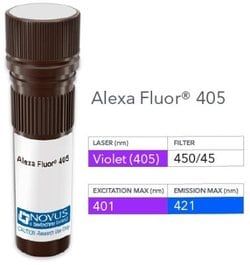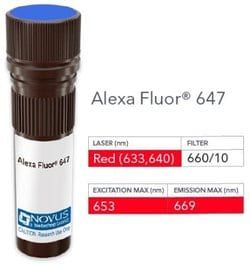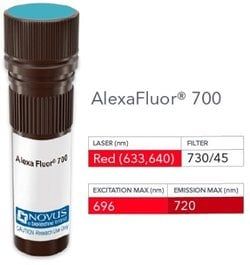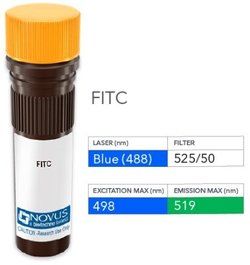TRAF-1 Antibody (TRAF1/3298) - Azide and BSA Free, Novus Biologicals™
Manufacturer: Novus Biologicals
Select a Size
| Pack Size | SKU | Availability | Price |
|---|---|---|---|
| Each of 1 | NB012689-Each-of-1 | In Stock | ₹ 57,494.00 |
NB012689 - Each of 1
In Stock
Quantity
1
Base Price: ₹ 57,494.00
GST (18%): ₹ 10,348.92
Total Price: ₹ 67,842.92
Antigen
TRAF-1
Classification
Monoclonal
Concentration
1 mg/mL
Dilution
Immunohistochemistry 1-2 ug/ml, Immunohistochemistry-Paraffin 1-2 ug/ml, Protein Array
Gene Alias
EBI6MGC:10353, Epstein-Bar virus-induced protein 6, Epstein-Barr virus-induced protein 6, TNF receptor-associated factor 1
Host Species
Mouse
Purification Method
Protein A or G purified
Regulatory Status
RUO
Primary or Secondary
Primary
Target Species
Human
Form
Purified
Applications
Immunohistochemistry, Immunohistochemistry (Paraffin), Peptide Array
Clone
TRAF1/3298
Conjugate
Unconjugated
Formulation
10 mM PBS with No Preservative
Gene Symbols
TRAF1
Immunogen
Recombinant fragment of human TRAF-1 protein (around aa 73-219) (exact sequence is proprietary) (Uniprot: Q13077)
Quantity
100 μg
Research Discipline
Apoptosis, Cancer, Cytokine Research
Test Specificity
This monoclonal antibody recognizes a protein of 52kDa, which is identified as TNFR1 (TNFR-associated factor 1). CD30-positive lymphoproliferations of the skin comprise 30% of all primary cutaneous T-cell lymphomas (CTCLs). Besides borderline cases this group includes lymphomatoid papulosis (LyP) and primary cutaneous anaplastic large T-cell lymphoma (cALCL). Although the two entities overlap clinically, histopathologically, immunopathologically and genetically, they differ considerably in their prognosis. In particular, common feature of both cases is histologically the presence of atypical lymphoid CD30-positive T blasts and genetically a clonal T-cell-receptor rearrangement. However, both cases differ considerably in their clinical course: Lesions of LyP regress spontaneously, whereas those of cALCL persist and may progress and spread. Moreover, LyP patients do not benefit from an aggressive radio- and/or chemotherapeutic approach, in contrast to patients with cALCL. Besides, LyP an
Content And Storage
Aliquot and store at -20°C or -80°C. Avoid freeze-thaw cycles.
Isotype
IgG2b κ
Description
- TRAF-1 Monoclonal specifically detects TRAF-1 in Human samples
- It is validated for Immunohistochemistry, Immunohistochemistry-Paraffin, Protein Array.






